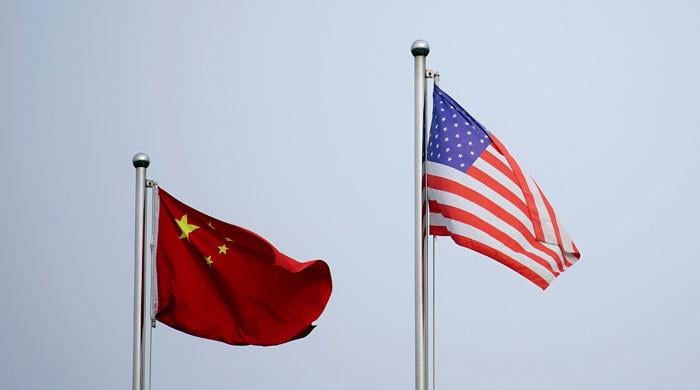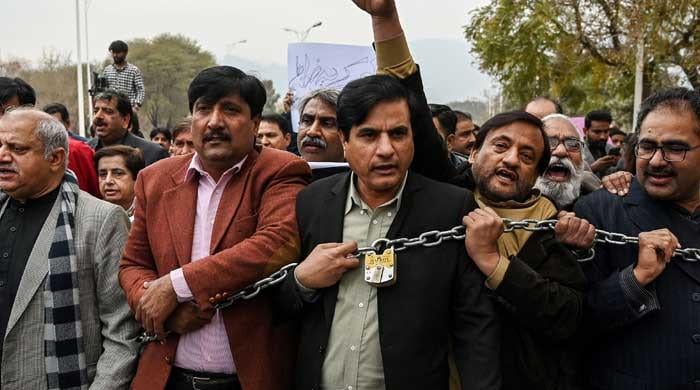Rise and fall of Karachi’s Valika family (Part 1)
Tracing their legacy takes us back to the golden days when Pakistan was in the making
August 10, 2022

As Pakistan commemorates the 75th Independence Day, it is important to look back at our history from different perspectives and see how, as a nation, we have reached this milestone.
It is equally important that we revisit some of our failures in political, social, cultural and economic endeavors and learn lessons from the tragic mistakes.
Much is written on the blunders made by successive governments. So, why not look at individuals, families or groups who were once movers and shakers of Pakistan and find how their rise and fall shaped our destiny.
One such family was the Valikas. Tracing their legacy takes us back to the golden days when Pakistan was in the making, the turbulence it endured and its potential to reemerge on the global stage.
You will be lost in history if you enter into the Lalazar Colony of Karachi. Most of the palatial houses in this opulent vicinity were built in the 1950s and 60s.
The arches in the living rooms, dining areas and balconies tell tales of some of those who were once the movers and shakers of Pakistan.
Most of these astonishing structures are now in a dilapidated condition, yet, their timeless elegance is a reflection of the rise and fall of fable dynasties.
The New Queens Road of Lalazar houses the extended family of Valikas. They were, once, one of the leading Muslim industrialists of Mumbai and known for their unflinching support to the cause of Pakistan.
The founder of this dynasty, Mr Valibhai enjoyed close association with the stalwarts of Muslim League and donated generously for their political activities.
During one of the meetings with his leader, Mohammad Ali Jinnah, Valibhai shared the idea of setting up a textile mill in Mumbai. The Quaid advised him to better opt for Karachi- the future capital of Pakistan. At that very moment, Valibhai made the decision.
The ageing Gujarati businessman sent all his four sons Fakhruddin Valibhai, Najjamuddin Valibhai, Saifuddin Valibhai, and Nooruddin Valibhai to Pakistan. The brothers wanted to stay close to each other in a joint family system.
Upon landing in Karachi, Fakhruddin Valibhai’s eyes settled on the Lalazar. It was a piece of coastal land reclaimed only a few years ago and could offer big plots to build palatial houses next to each other. Finding one house after another in the name of Valibhai, the neighbours gave the homes the nickname “Valica”, which later became “Valika”. This word simply means “Valibhai Community”.
Next, the brothers bought a big piece of barren land in the Manghopir industrial area, which then had only a few units. On September 26, 1947, the immigrant family established their first mill. Lady luck was with them and this initiative became the basis for many such firsts in different sectors.
Quaid-e-Azam Muhammad Ali Jinnah honoured them by inaugurating the Valika Textile Mills. It became a source of employment for the locals, as well as the migrants who had left everything in India for their new homeland.
The Valikas enjoyed monopoly in textiles till another giant Colony group set up their mill. By the early 1950s, the number of textile mills reached eight, as the government also established two units in Bannu and Harnai.
For the visionary Valikas, it was time to set up another novel industry and invest in new technologies. Now, they tried their luck in producing polyester and related products. It transformed them from importers of rough material for their mills to the exporters of fine products made at the Valika Art Fabrics.
Finding the new ground more fertile than India, they added another first to their list by a phenomenal investment in the Cement Industry. Till that time, the newly emerged country didn’t have a single cement industry.
Valika Cement gave an instant boost to the family wealth and equally increased self-reliance of the nation.
The industrialists of that era were basically reaping the benefits of then president Ayub Khan’s efforts to industrialize Pakistan.
For the business community, it was a golden era. The country was emerging fast and the business tycoons were being lured by diplomats for investments in the region and beyond.
Those who didn’t want to put all the eggs in one basket grabbed the lucrative overseas opportunities. On the other hand, Valikas kept sailing in the same boat. They set up Valika Chemicals which introduced cutting edge German technology.
By then, the family had become so influential that visiting foreign dignitaries like Chinese Premier Zhou Enlai would visit their industrial units.
Putting it plainly, the Valikas were following the footsteps of Tatas of India. Wherever they faced obstacles, they would open their own magnanimous industrial units to have uninterrupted supplies.
The volume of investment could be gauged by the fact that their Muhammadi Steamship Company stood first to order locally built cargo ship SS Al-Abbas that became operational in 1967. The family never knew that in no time, the very ship would be the first to shatter their dreams.
Till then, there were no signs of the looming disaster. The economy was booming and so was the fortune of Valikas. They summed up resources and went all out to set up their steel mills. It was an idea later followed up by the Pakistan government but only realized with the help of the Soviet Union.
In order to make space for their current and upcoming units, the Valikas built the iconic Muhammadi House on II Chundrigar Road. It was the first skyscraper of Pakistan that boasted of having ten floors.
Today, we see every other residential apartment setting up new limits. But, back then, it took decades for giants like Habib’s to build HBL building, on the very road that ended the dominance of Muhammadi House forever.
The 22 story HBL headquarters was inaugurated on September 4, 1971. From that day, Valikas couldn’t see the rising sun again. The next few months only witnessed their unfortunate fall, though not from grace.











